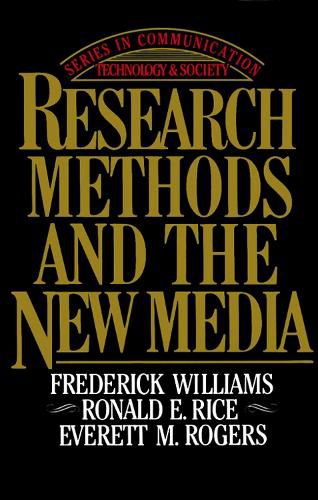Readings Newsletter
Become a Readings Member to make your shopping experience even easier.
Sign in or sign up for free!
You’re not far away from qualifying for FREE standard shipping within Australia
You’ve qualified for FREE standard shipping within Australia
The cart is loading…






The new media – interactive videodiscs, telecommunications, computers, VCRs, teletext systems, and more – present researchers with new challenges when it comes to studying practical applications or theoretical effects. This valuable volume aids researchers in first recognizing the special qualities of interactivity, demassification, and asynchroneity that the new media have created and to instruct professional researchers and students in alternative research methods, multiple methods, and the triangulation of results. For the first time, a variety of methods are examined as they apply to new media research, including mathematical modeling, controlled experiments, quasiexperiments, surveys, longitudinal studies, field studies, archival and secondary research, futures research and forecasting, content analysis, case studies, and focus groups. Whether the problem to be researched is as focused as considering the cost-benefit for a school wishing to adopt computers in the classroom or as wide-ranging as determining the effects of video games on child socialization, this up-to-date and thorough guide alerts researchers to the pitfalls of traditional methodology and offers a firm foundation upon which they can build reliable, accurate projects able to produce sound results.
$9.00 standard shipping within Australia
FREE standard shipping within Australia for orders over $100.00
Express & International shipping calculated at checkout
The new media – interactive videodiscs, telecommunications, computers, VCRs, teletext systems, and more – present researchers with new challenges when it comes to studying practical applications or theoretical effects. This valuable volume aids researchers in first recognizing the special qualities of interactivity, demassification, and asynchroneity that the new media have created and to instruct professional researchers and students in alternative research methods, multiple methods, and the triangulation of results. For the first time, a variety of methods are examined as they apply to new media research, including mathematical modeling, controlled experiments, quasiexperiments, surveys, longitudinal studies, field studies, archival and secondary research, futures research and forecasting, content analysis, case studies, and focus groups. Whether the problem to be researched is as focused as considering the cost-benefit for a school wishing to adopt computers in the classroom or as wide-ranging as determining the effects of video games on child socialization, this up-to-date and thorough guide alerts researchers to the pitfalls of traditional methodology and offers a firm foundation upon which they can build reliable, accurate projects able to produce sound results.